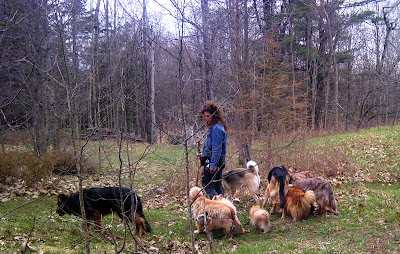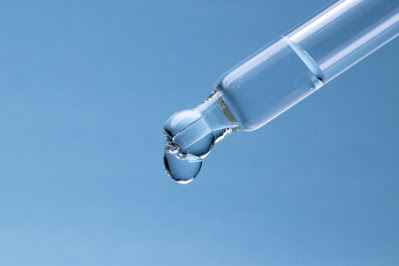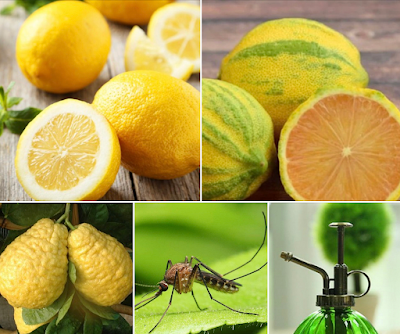Fish for Your Dog’s, Cat’s Diet - Selection, Preparation, Recipes - Raw, Cooked
In this article:
1.0 How to Select the Best Fish for Your Dog and Cat
- How to Select the Best Omega Fatty Acid Rich Fish
- How to Avoid Mercury Contamination
- How to Avoid POP Contamination
- Farmed Fish, Toxic
- Canned Fish
- Mislabelled Fish, Seafood Fraud
2.0 Preparing and Handling Raw Fish
- Simple Health and Safety Tips
3.0 How to Include Fish in Your Dog and Cat's Diet
- How Often
- Daily or Weekly Serving Guideline
- Which Parts of the Fish
- Raw or Gently Cooked
- How to Gently Cook Fish
- When to Serve Fish
- Hypersensitivity to Fish (Intolerance or Allergy)
4.0 Recipes
- Species Appropriate Diet - Raw or Gently Cooked
- Fish Bone Broth Recipes
- Bone Broth
- Bone Broth Gelatin
- Short Cooked Broth
Are you including fish in your dog and cat's diet?
It can be confusing to know what type of fish is best, what to avoid, how much to include in the diet and how often.
This article answers all those questions and more. In this article, your guide to selecting, preparing and serving fish for your dog and cat.
1.0 How to Select the Best Fish for Your Dog and Cat’s Diet
Deep, cold water (e.g. Atlantic Ocean, waters off of the
Alaskan coast, and the Norwegian coast) are less contaminated than other bodies
of water.
Fish that live in these cold deep waters have high body-fat content,
rich in EPA and DHA omega-3 fatty acids and the lowest levels of contaminants.
If you want your dog or cat to consume fish for the amazing health benefits
offered by high-levels of omega-3 fatty acids purchase wild or wild caught, cold water fish.
The
species of fish that offer the highest levels of omega-3 fatty acids are:
- Alaskan Halibut
- Herring
- Lake Trout
- Mackerel
- Salmon
The species of fatty fish with the highest level of protein are:
- Salmon
- Snapper fish
- Swordfish (an endangered species)
The fish offering the best omega-3 fatty acids are:
- Alaskan Halibut
- Herring
- Lake Trout
- Mackerel
- Salmon
- Sardines (Pilchards)
- Smelt
- Sprats
- Swordfish
However, when selecting between the fish listed above, its important to factor in mercury contamination.
1.2 How to Avoid Mercury Contamination
Its important to select fish that is relatively low in mercury contamination.
Cold water wild or wild-caught fatty fish, not currently endangered from
over-fishing and lowest in mercury are:
- Alaskan Salmon
- Arctic Char
- Herring
- Pacific Flouder
- Pacific Salmon
- Pacific Sole
- Sardines (Pilchards)
- Smelts
- Sprats
The highest mercury contamination
for wild and wild caught fish occurs in:
- Atlantic halibut
- Golden snapper
- King mackerel
- Marlin
- Pike
- Sea Bass
- Shark (endangered species)
- Swordfish (endangered species)
- Tuna (albacore is the highest mercury content tuna; skip jack, tongol and yellow fin {ahi} are a little lower in mercury content)
Fish
from the high-mercury contaminated category should be avoided.
Pregnant and lactating dogs and cats, puppies and kittens should never be fed any high mercury contaminated fish.
1.3 Limit Exposure to Persistent Organic Pollutants (POPs)
POPs are pollutants that exist in the environment which bioaccumulate
in the body of humans and non-human animals.
1.6 Mislabelled Fish, Seafood Fraud
3.1 How Often
3.2 Daily or Weekly Serving Guideline
To prevent thiamine deficiency:
POPs are toxic substances that
pose extreme health hazards to humans, animals, including dogs and cats, and
the environment. PCB’s and DDT are two examples of POPs.
Wild and wild caught fish lowest in POPs:
- Wild Alaskan Salmon
- California
salmon
Read more
about POPs here.
1.4 Farmed Fish - Not Good for Your Dog and Cat
Whole fish from clean, cold open
waters offers the best quality, low-contaminant nutrition and are preferable to
farm-raised whole fish or fish meal.
Farmed fish
(factory farm fish) is one of the most toxic foods in the world.
Learn more about farmed fish:
- Why I don't recommend farm raised fish for dogs and cats
- Toxins in farm raised fish
- Farm raised fish exposure to environmental toxins
- Toxins from medications
- Toxins from farm raised fish food
- Good and bad farm raised fish?
- GMO salmon
Go to this article.
1.5 Canned Fish
Canned fish is good to keep on hand for an emergency, but I don't recommend using canned fish as part of a long-term diet.
Short term use of canned food (several weeks) has been shown to elevate levels of Bisphenol A (BPA) in dogs. BPA is a toxin and carcinogen. BPA leeches into canned food from the can lining material.
Heavy metal and other contaminates can also leach into food from the metal can and can lining.
Sadly, another problem with canned fish is mislabelling.
1.6 Mislabelled Fish, Seafood Fraud
In the last few years companies have been caught mislabelling fish, canned and packaged fish.
The ocean conservation group Oceana, issued a report in 2013 exposing massive fraud in the sea food industry.
Read a brief overview of that report and download the full study here.
You can also take a look at this article by the CBC.
2.1 Simple Health and Safety Tips
My dogs and cats get raw fish as part of their regular raw diet. Raw fish is a safe, healthy food for dogs. There's a few basic rules.
2.1.1 Before Serving Raw Fish to Your Dog and Cat
Fresh fish must be frozen for at least 21 days prioir to serving it raw.
Freezing fresh fish for a minimum of 21 days helps ensure
parasites (that may be present in the fish) are killed.
2.1.2 Defrost Frozen Fish in the Refrigerator
Always defrost raw
frozen fish in the refrigerator. Don’t thaw raw fish on the
counter, in the sink, etc.
2.1.3 Ready To Serve
As soon as the fish is defrosted its ready to be served by
your dog, and cat.
Once defrosted, use within two to three
days.
3.0 How to Include Fish in Your Dog and Cat's Diet
3.1 How Often
Fish can be included
in the daily diet, or included several times a week.
3.2 Daily or Weekly Serving Guideline
3.2.1 Serving Guideline - Daily or Weekly Fish Serving Size
Fish can represent up to:
- 20% of your dog and cat's animal protein intake, on a daily or weekly basis.
For example:
If your dog eats 8.0 ounces (226 grams) of animal protein per day, your dog can have up to 1.6 ounces (45 grams) of fish per day.
3.2.2 Avoid Creating Thiamine Deficiency
A diet that
consists of fish as the only animal protein can result in thiamine deficiency.
Thiamine deficiency is a serious condition that causes:
- Loss of appetite.
- Seizures.
- In severe cases, death.
- Follow the simple daily serving guideline provided above.
Your dog and cat's diet should include a minimum of 4 to 5 animal protein types
Learn more about:
- Species appropriate diet.
- Appropriate animal protein types.
Go to this article.
3.3 Which Parts of The Fish
Your cat and dog can consume all parts of a fish, from head to tail including the skin.
Small fish such as sardines can be consumed whole.
Large fish such as salmon should be divided into smaller sections. For example the salmon head can be served as part of a meal.
If you're preparing salmon for yourself don't throw the salmon skin in the garbage, include it in your dog and cat's meals.
3.4 Raw or Gently Cooked
Small-size whole raw fish such as sardines are perfect for dogs and cats to consume whole (including the sardine head and tail).
Sardines come in several sizes, from several inches long up to 5” to 6” long.
Sardines are a great choice to begin transitioning your dog
or cat to raw food.
Start by giving your dog or cat a small sardine, (or piece
of), as a treat away from other food, and meals.
Don’t mix raw food including
raw fish with a highly processed dry (kibble) or wet ‘food’.
Allow your dog and cat to indicate their preference for raw or gently cooked fish.
3.5 How to Gently Cook Fish
- Pour a small amount of water (e.g. 1/4" {6.3 cm} to 1/2" {12.7 cm}) on the bottom of a stainless steel fry pan.
- Place the fish in the saucepan.
- Place the lid on the sauce pan.
- Turn the stove top burner to the second lowest heat seating.
- Gently simmer the fish for a few minutes.
- Remove from heat, allow to cool.
- Pull the spine from the cooled, cooked fish and discard the spine.
- Serve.
3.6 When to Serve Fish
Fish can be served as the primary animal protein or as a
secondary animal protein in a meal.
Fish can also be served as a mini-meal or treat in-between main meals.
3.7 Hypersensitivity to Fish (Intolerance or Allergy)
Some
dogs, and cats are hypersensitive (intolerant or allergic) to one or
various types of fish. If this is the case for your animal, don't
include the fish your animal is reactive to.
Food Intolerance
If your dog of cat is not able to properly digest of specific type of fish, she may experience diarrhea or vomiting after eating the fish. If this occurs, don't offer the fish again.
High Fat Intolerance
Some
dogs and cats cannot tolerate the high fat content of fatty fish. The high fat content may inflame the animal's pancreas,
resulting in diarrhea or vomiting. If this occurs to your animal offer a
leaner type of fish such as cod.
Allergy
Learn more about food allergies:
- Go to this article.
4.0 Recipes
4.1 Species Appropriate Diet – Raw, or Cooked
Learn about a species appropriate raw or gently cooked diet for your dog and cat:- Go to this article.
4.2 Fish Bone Broth Recipes
Fish heads, fish tails and whole fish are excellent for
making health sustaining fish bone broth,
and bone
broth gelatin. You can also make short-cooked broth.
4.2.1 Bone Broth Recipe:
- Go to this article.
4.2.2 Bone Broth Gelatin Recipe:
- Go to this article.
4.2.3 Short Cooked Broth Recipe
- Go to this article.
Holistic Diet, Nutrition, Wellness Services Tailored to Your Individual Dog and Cat
For information about my holistic diet, nutrition, wellness services visit my:
Maintain good health | Address acute and chronic health issues | Pre and post surgery support and recovery
My holistic wellness services are available worldwide via video consultation.
🌎 USA | Canada | UK | Europe | Australia | New Zealand | Asia | South and Central America | Africa | UAE
📱 FaceTime | Facebook | Skype | WhatsApp
Holistic Behavioral Services For Your Dog
For information about my holistic behavioral services visit my:
For dogs of all ages, sizes and breeds
My holistic behavioral services are available locally in-person and worldwide via video session.
🌎 USA | Canada | UK | Europe | Australia | New Zealand | Asia | South and Central America | Africa | UAE
📱 FaceTime | Facebook | Skype | WhatsApp
Affiliations to Companies
✓ None.
✓ I don't sell food or supplements.
✓ I'm not aligned with any companies.
✓ None.
✓ I don't sell food or supplements.
✓ I'm not aligned with any companies.
Article by Karen Rosenfeld





















